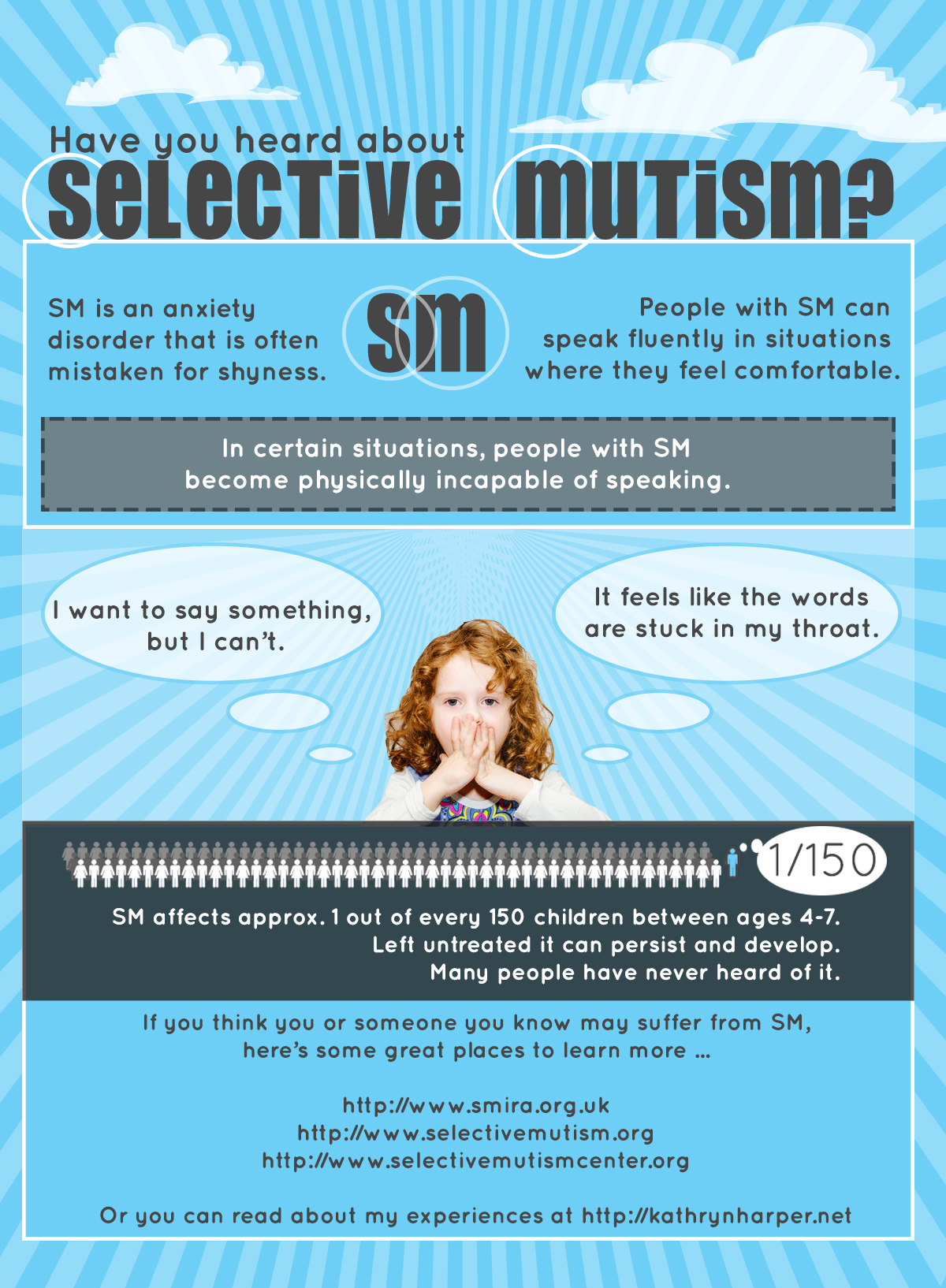As many of my readers will know by now I am the father of a nine year old boy with classic autism. Our ASD journey has opened my eyes to a number of different but , in some ways , related conditions of behaviours. From example last week we looked at Fragile X Syndrome. Today I would like to focus on Selective Mutism.
Affecting about 1 in 150 children Selective mutism (SM) is an anxiety disorder that stops children speaking in certain situations, for example when they are in school or out and about in public.
But they are able to speak to family and their friends when nobody else is listening. So for some children on the autism spectrum Selective Mutism can be a symptom.
As the UK’s NHS say “the child is not voluntarily refusing to speak but is literally unable to speak, feeling frozen. In time, they learn to anticipate the situations that provoke mutism and do all they can to avoid them.”
As with autism many children learn to cope and overcome a lot of the problems created for them by SM. However they will often be more reserved than their peers.
To help raise awareness of Selective Mutism we are sharing this great infographic produced by Kathryn Harper. You can read here blog post on SM here. Harper’s blog is one of the best sources of information on SM and is very well worth a read. That being said if you know of any good links please do share in the comments box below.
It would be great if you could use the comment box to share your Selective Mutism story. Anything you have to say is of great interest but you might want to focus on the following questions:-
a) Is it you or a family member with SM?
b) At what age did SM appear?
c) What therapies were employed and how well did they work?
d) What was the long term impact of Selective Mutism?
e) What advice would you give to a family where they has just been a diagnosis of Selective Mutism.
Thanks very much in advance for your help.


